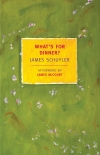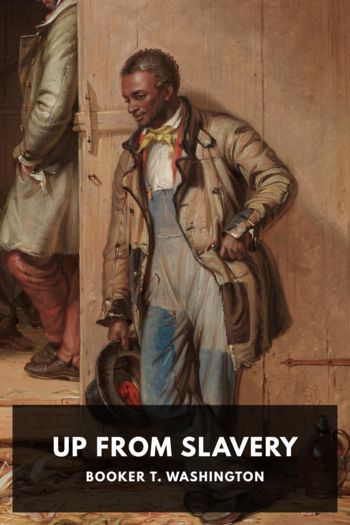What's for Dinner? James Schuyler (best inspirational books TXT) 📖

- Author: James Schuyler
Book online «What's for Dinner? James Schuyler (best inspirational books TXT) 📖». Author James Schuyler
Closer both to home and to the matter of What’s for Dinner? in the generation just before Schuyler’s is John Berryman’s Recovery. It is to Berryman and to Recovery that Schuyler and What’s for Dinner? may be usefully compared. Each poet had at different times in his life been known by different names, Berryman having been born John Smith, Schuyler, James Marcus Schuyler, but taking the name Jim Ridenour when, after a divorce, his mother Margaret (“Manie“) Connor remarried, then later, as a poet, reclaiming Schuyler. Both were alcoholics who suffered periods of extreme mental and emotional breakdown, both were in and out of mental asylums and, as time wore on and the disease from which they suffered became better understood, more sophisticated treatment programs and institutions. In Recovery, Berryman transcribed the exact details of his own treatment in vivid, unsparing, and dogmatic terms, much as he had concentrated, in Dream Songs, on the pilgrim’s progress of a single surrogate, Henry. Schuyler, having eschewed a surrogate and written unsparingly in “The Payne Whitney Poems“ of “Jim the Jerk,” in What’s for Dinner? adopted a different strategy, diffusing the experience and torment by vividly depicting a whole stock company of clearly differentiated characters (like the other members of the New York School, he had dabbled in playwriting for the Poet’s Theater), casting himself as a walk-on in the slow-motion chase-finale.
Whether or not Berryman’s capitulation (he was a suicide) can be causally related to his self-lacerating and ironic style, or Schuyler’s eventual recovery to the deft and beguiling strain in his own surreptitiously formal, fractal free verse, is a fascinating moot point which might lie outside the legitimate brief given to literary criticism except for the demonstrable fact that the Berryman habit of mind, the acceptance of severe chastisement so long as one is able to sustain the illusion of being in control of its meting out, is the stance most generally characteristic of the poet-turned-novelist. Schuyler, by the time he set about writing What’s for Dinner?, had become convinced he’d already been chastised enough and certain of the message that whoever or whatever there was in control wasn’t James Marcus Schuyler.
The novel as a form has its own legitimating brief, its own rigor, its own decorum, and its own licensed premises. As Leo Bersani writes, “the novel seems to be a testing-ground for uncovering and at the same time devising some means of escape from the self’s most limiting (if fundamental) formulations.” In What’s for Dinner?, a whisper-low tour-de-force of frank avowal and putative shrift, Schuyler’s seductive narration, in which the ratio of the latent to the overt is never stable, earmarks a performance so diffident that it has almost, until now, escaped notice. Employing current terminology, it may be correctly called encoded, but as with his poetry Schuyler’s code is hardly in itself an epitome of the enigmatical (in contemporary terms he would have enjoyed, hardly the textual equivalent of hypertext’s anchoring call-outs, case-sensitive passwords, macros and spikes). Who else might Mary Charlotte Taylor fairly represent besides the author of The Home Book in the fictional guise of a respectable, middle-aged housewife, or in a second instance, what better way to introduce the idea of the author and his subversive double (the lyric poet who could hold his own in the ring with any of his contemporaries, withal a gentle soul who nevertheless looked, and upon occasion certainly did act, as though he should have been nicknamed “Sluggo“) than by creating a twinned pair of rambunctious teenage boys, one dedicated to seducing the reluctant other, by a combination of fraternal-buddy smooth talk and main force, into a frothy, incestuous sexual alliance?
Pertinent to the overall decorum is the blithe reversal of what might have been expected in the story line (conventionalities abound in What’s for Dinner?, foregone conclusions do not), which gives the attentive reader a key insight into Schuyler’s sense of the transgressive, the comical and the quizzical, or random in life (for he was a poet as enamored as was Robert Herrick of the wild civility of the careless shoestring), particularly as regards the action of what is commonly called grace. In his fiction as in his poetry, the most telling evidence can be found, not exactly of the unseen, more of the completely overlooked, together with an eerie notion of causality, as if such superseded but metaphorically persistent phenomena as the four humors, phlogiston, spontaneously generated maggots, and the odor of sanctity in corpses did still obtain.
Schuyler attached great importance to the fact that his mother was both of Irish extraction and a Christian Scientist: there were for him many more things in heaven and on earth than were dreamed of in psychiatric medicine as practiced in the 1950s and 1960s. Thus there is always something lurking in the shadows, or just out of the frame. An important difference, however, from what we might call the normal abnormal is that the lurking something, uncannily powerful, turns out to be benevolent.
Here is the story that might be expected. Seemingly happily married man in small-town America enters into torrid affair with neurotic newly widowed neighbor; abandoned wife takes to the bottle, but is enabled by local psychiatric facility to regain dignity, confront husband, and start over.
Here is the transformation wrought by Schuyler. Visibly contented small-town wife bewilderingly takes to the





Comments (0)